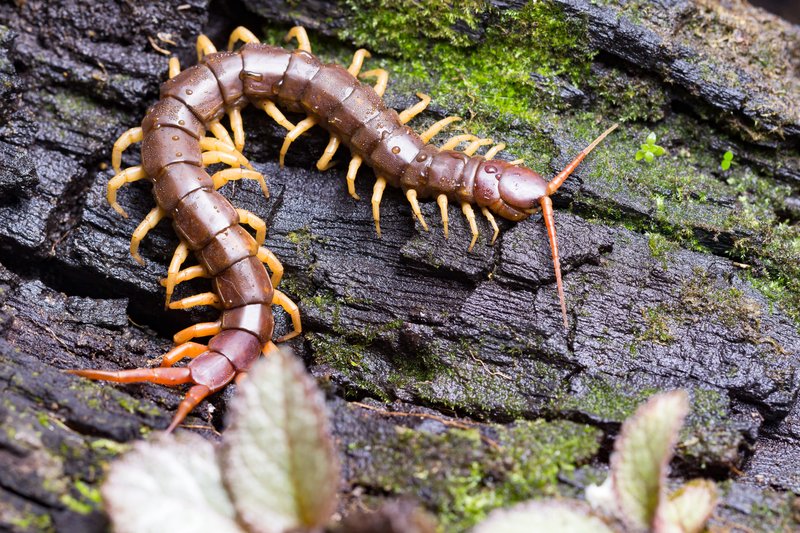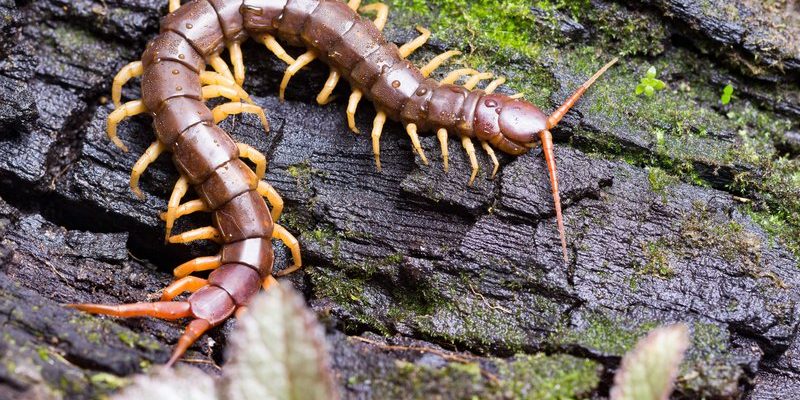
This post will dive into the world of velvet worms and compare them to their more familiar cousins: centipedes and millipedes. We’ll explore their habitats, physical characteristics, eating habits, and how they fit into the animal kingdom. Whether you’re a curious nature enthusiast or just looking to impress your friends at a dinner party, you’ll find some intriguing insights here. So grab your coffee, and let’s get cozy with some cool critters!
What Are Velvet Worms?
Velvet worms, also known as Onychophorans, are soft-bodied creatures that typically dwell in humid, tropical environments. These fascinating organisms date back over 500 million years, making them some of the oldest animals on Earth. If you’ve ever seen a tiny, squishy caterpillar, that’s kind of what a velvet worm looks like—only much weirder. They come in various colors, often exhibiting a light brown or blue hue, which helps them blend into their leafy surroundings.
These worms are more closely related to insects and spiders than you might think. One of their most distinctive features is their velvety skin, which is covered in tiny, hair-like structures. This not only gives them their name but also helps them retain moisture. Velvet worms have *many* legs; however, unlike centipedes or millipedes, they have pairs of stubby, non-jointed legs (usually around 14 to 44 pairs) that help them navigate through the damp forest floor.
Centipedes: Speedy Predators
Now, let’s talk about centipedes. Imagine you’re in a race, and these guys are the Usain Bolts of the insect world. Centipedes are quick, with long, segmented bodies and one pair of legs per body segment, making them fast movers. They usually have 30 to 354 legs—yes, you read that right! Their impressive speed lets them catch prey like insects and spiders, making them effective predators.
Centipedes are mostly nocturnal hunters. They come out at night, prowling for their next meal. With their venomous bite, they can easily incapacitate their prey before dining. You might be wondering if they’re dangerous to humans. While they can bite, causing pain and swelling, they’re generally not lethal. Still, if you’ve ever been surprised by one in your home, you know the scare factor is real!
Millipedes: The Slow Movers
In contrast to centipedes, millipedes embody the phrase “slow and steady wins the race.” These creatures are known for their many legs—typically between 34 to 400! Unlike centipedes, they have two pairs of legs per body segment, giving them a thicker, cylindrical body shape. Millipedes are usually herbivores, munching on decaying leaves and plants, which makes them essential for breaking down organic matter in their ecosystems.
You might have spotted millipedes curled up in a ball when threatened. This defensive behavior, known as “coiling,” is a clever way to protect their softer undersides. While some millipedes can secrete toxins as a defense mechanism, they’re not harmful to humans. In fact, they often play a vital role in the ecosystem by enriching the soil.
Feeding Habits: Who Eats What?
When comparing velvet worms, centipedes, and millipedes, their feeding habits reveal a lot about their lifestyles. Velvet worms are known for their unique hunting technique. They can shoot a sticky slime at their prey, which helps them capture insects quickly. This slime dries rapidly, effectively immobilizing their meal. It’s like having a built-in net to snag dinner!
Centipedes, on the other hand, are ruthless predators. They use their venomous bite to subdue their prey before consuming it. Their diet mainly consists of insects, spiders, and even small vertebrates. With their speed and agility, they often hunt at night, which gives them an edge over most of their prey.
Finally, we have millipedes, who prefer a more leisurely approach to eating. They primarily feed on decaying plant material, contributing to healthier soil. Their role as decomposers is crucial for the environment, as they help recycle nutrients. So while one devours and another captures, the millipede takes its time, munching on what others might overlook.
Habitat and Distribution: Where Do They Live?
Velvet worms favor moist, tropical environments, often found in leaf litter or under fallen logs. They thrive in areas with high humidity, which helps them retain moisture and stay active. Because they’re sensitive to changes in their habitat, they can often be indicators of a healthy ecosystem.
Centipedes are quite adaptable and can be found in a variety of environments, from forests to deserts. However, they prefer dark, damp places—the perfect hiding spots for hunting. You’ll often find them under rocks, logs, or in your basement, if they’ve wandered a bit too far!
Millipedes, too, love moisture and are often found in similar habitats as velvet worms. They tend to live in soil rich in organic matter, usually beneath damp leaves or logs. Their slow-moving nature means they don’t venture far from their homes, making them easier to spot in their specific environments.
Evolutionary Relationships: The Bigger Picture
When we delve into evolution, it’s fascinating to see how these creatures fit into the larger picture of life on Earth. Velvet worms are part of a group of animals called “panarthropods,” which also includes insects, arachnids, and myriapods like centipedes and millipedes. They share some common ancestry, but their evolutionary paths diverged millions of years ago.
Centipedes and millipedes belong to the myriapod class, meaning “countless feet.” While they share some features, their differences are equally important. Centipedes are more closely related to insects, showing that speed and predation have influenced their evolution. In contrast, millipedes adapted to a detritivore lifestyle, focusing on decomposition, which leads to better soil quality.
Understanding these evolutionary relationships helps reveal why these creatures behave the way they do and highlights their vital roles in various ecosystems.
The Importance of Each Creature in the Ecosystem
While velvet worms, centipedes, and millipedes may seem like simple creepy crawlies, they play essential roles in their ecosystems. Velvet worms help regulate insect populations by preying on them, thus maintaining balance in the food web. Their presence is a reminder of healthy forest ecosystems.
Centipedes act as efficient predators, controlling pest populations. This makes them incredibly valuable in natural pest management since fewer pests can lead to healthier plant growth.
Millipedes, as decomposers, break down organic matter. By recycling nutrients back into the soil, they help promote new plant growth. Without these slow movers, we would see a decrease in soil health, impacting the entire ecosystem.
In essence, each of these creatures contributes uniquely to the planet’s health, showing us that even the smallest beings can make a significant difference.
As we’ve explored, velvet worms, centipedes, and millipedes each bring their unique flair to the world of invertebrates. While it’s easy to overlook these creatures as just common pests, they each play a significant role in their ecosystems—whether it’s through predation, decomposition, or other fascinating behaviors.
When we take the time to appreciate these tiny animals, we can develop a greater respect for our environment. Next time you come across a centipede or a millipede, think about their role in nature. And who knows, you might even find velvet worms to be your new favorite critter!

